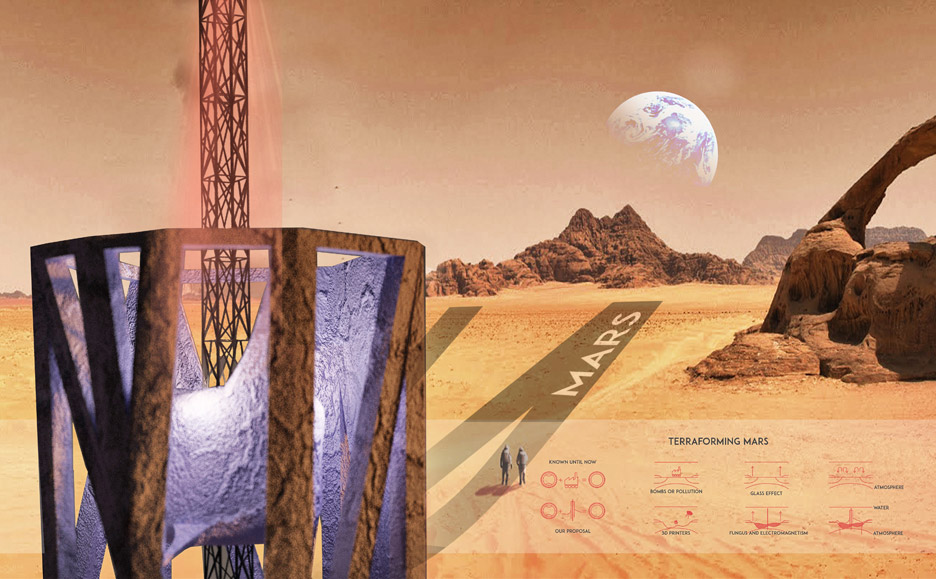There’s likely nothing theoretically impossible about terraforming a planet, but it would sure be complicated and the unintended consequences would be too many to count. That won’t stop the plans from proliferating, however, as the idea that we must become a multi-planet species has taken hold. Young Spanish architect Alberto Villanueva has dreamed up an elegant scheme, and one that doesn’t rely on explosions, to repurpose Mars’ natural resources to remake its environment. From 3tags.org:
Choosing Mars as “the hardest scene,” Villanueva created a concept that would use the planet’s newly discovered frozen water and soil as building materials.
3D printers could be sent to selected craters that hold water beneath the surface, where they would build structures using Mars’ soil as a material. These could then collect energy from electromagnetic fields in the surrounding areas to melt the crater ice. Over a period of six months the towers would disintegrate, and be replaced by new bio-luminescent structures that could be printed using fungi and bacteria feeding off the newly melted water.
These towers would then convert the planet’s carbon dioxide into oxygen. The architect estimates that enough will have accumulated after two months to “form and give consistency to the small atmospheric layer of the planet.” After this period, Villaneuva believes there will be enough oxygen for future inhabitants to breathe on the planet.
“In this case the building as an organic element fades after about five years, deleting any footprint on the planet and maintaining a living atmosphere,” he said.•
MARS UTOPIA (Teaser) from Alberto Villanueva on Vimeo.
Tags: Alberto Villanueva

